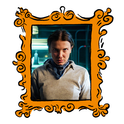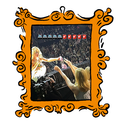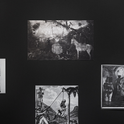In 1980, John Berger published an essay on the degraded state of animals in the 20th century. As industrialisation removed wild animals from our day-to-day lives, he wrote, we replaced them with iconography: fluffy toys, picture postcards, pets. In zoos they became “the living monument to their own disappearance.” We no longer see animals as living beings like us. They became reduced to mere images and symbols, the more exotic and alien, the more symbolic their image.
Francis Bacon could perhaps be the most significant chronicler of this marginalisation. Painting exclusively from books, postcards, film stills and other scraps, never from life or living subjects, his work shows the imagery of the world thrown back at us. It is made not from life but from its symbols, reflected in a broken mirror.
Is this accolade—as recorder of humanity’s alienation from nature—what the Royal Academy has attempted to bestow on the artist in its latest exhibition, Francis Bacon: Man and Beast? Not quite, or at least not on purpose. On the surface, it is more a call to bridge the divide between humans and animals or even to suggest that any divide is superficial.
The curators are quick to highlight the indelible links between Bacon’s life and animal life—and by extension the animalistic instinct with human instinct—in his work. They present how essential animals were to him from the very beginning, from his upbringing surrounded by horses on a stud farm in Ireland (horses are, in fact, conspicuously absent from his work) to his trips to see wildlife in southern Africa, to his vast collection of animal photographs.
Early on in the show, the line between what is human and animal is indeed blurred. In Man with Dog (1953), the man appears as only a pair of legs by the dog’s side, more a shadow than a figure in his own right. It is the dog that is disconcertingly human. It has the intense, brutal musculature of a bodybuilder collapsed on all fours. The dog’s collar and quadrupedal posture introduce something both violent and sexual to the image, but whether these stem from the dog’s suggestive humanoid shape or its essentially animal form is unclear. Elsewhere the stretched mouth of a chimpanzee, seen in several of Bacon’s paintings spread over many years—including Head I (1948) and Chimpanzee (1955)—we identify as both a cry of agony or ecstasy that feels somehow human.

But as we continue through the exhibition, the connection between the animal and the human becomes more spurious: from their literal depiction we come to rooms conveying a vague sense of “the animal within” or “bodies in motion,” where some of Bacon’s most overexposed works are on display: his popes, his tussled portraits of lovers Peter Lacy and George Dyer. If humans are animals and animals human, then essentially all of Bacon’s work can be classified under the same category. At this point we realise that Bacon’s method prevents him from elevating animals beyond their role as foils in human dramas. We try to look at animals, yet time and again we see only ourselves.
By the latter rooms Bacon becomes his most overtly and singularly human. Throughout his life Bacon insisted that his work was shorn of narrative context, which he considered to be the trap of “illustration.” He wished instead to characterise his works as evoking a purely emotive or sensual response from its viewer, to “return the onlooker to life more violently.” Here the RA has chosen to characterise this response as being essentially animalistic. But nothing reveals Bacon’s failure to avoid narrative more than his obsession with triptychs, to which an entire room is dedicated here.
This failure is because the act of bringing images together in sequence inevitably evokes a narrative progression. One triptych here, Three Figures in a Room (1964), depicts Bacon’s former lover George Dyer—the man with the most recognisable profile in all of Bacon’s art—first sat doubled over on a toilet seat, apparently in contorted agony. He is looking away from us. In the next he is in repose on a navy lounger, now facing forward but looking off to the side, distant and removed. In the third he has fallen to the floor, in an apparent relapse.
It is in the spaces between these images that the possibility for narrative is opened. What has happened to Dyer? Is he getting better as he writhes between the frames? What does this progression from one state to another mean? Dyer’s convulsions become a chapter of his life story, where we as viewers feel compelled to make coherent.

Another narrative is evident in one of the last triptychs Bacon ever painted, Triptych (1987), conveying a matador’s wounds in the aftermath of a bullfight. Three curved panels jut out from a rough patch of earth, like monoliths in the desert. Inside two of the panels are the floating limbs of the matador. In the first the limbs are laid down, displaying red punctures from the bull’s horn; in the second they are standing, some of the wounds lightly bandaged. In the third the bull itself appears, triumphantly alive and with horns poised. We look at the fight’s conclusion and imagine how we got to that point. The triptych is the beginning, middle and end of the matador’s humiliating emasculation. We see beyond the edge of the triptych, at the possibility of the matador’s death from his injuries.
This ability of ours to see things beyond what they are—and to see connections that are not obvious—is about as far from that reactive animal instinct as you can get. That is the product of the world we have spent centuries fashioning for ourselves, in which we have become surrounded by images that affirm our separateness and the stories we tell each other.
We ceased to be animals long before Bacon began to paint. In his work he strived to show there remained something fundamentally animal in our nature. In his failure to reveal that fundamental thing he instead confirmed the opposite. Like the outstretched mouth of his favourite chimpanzee, the divide between the human and the animal is as wide as it ever was—and our loneliness complete.
Francis Bacon: Man and Beast is on display at the Royal Academy of Arts from 26th January to 17th April













